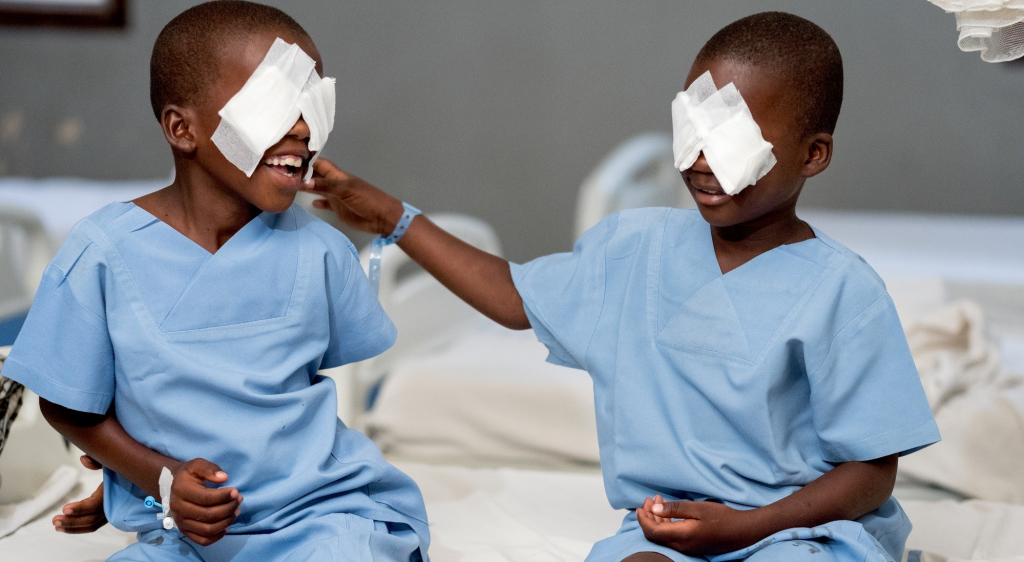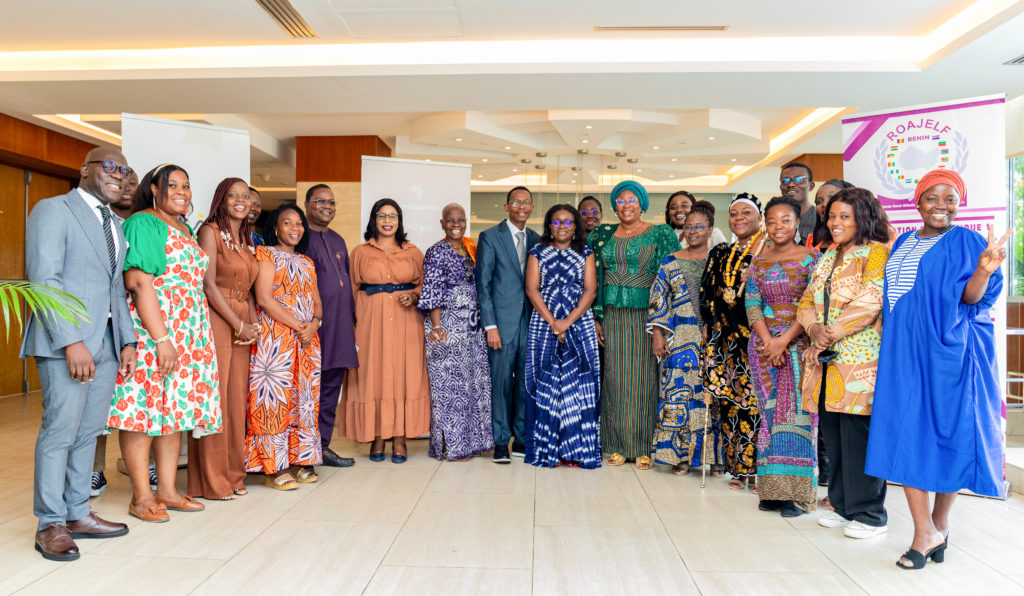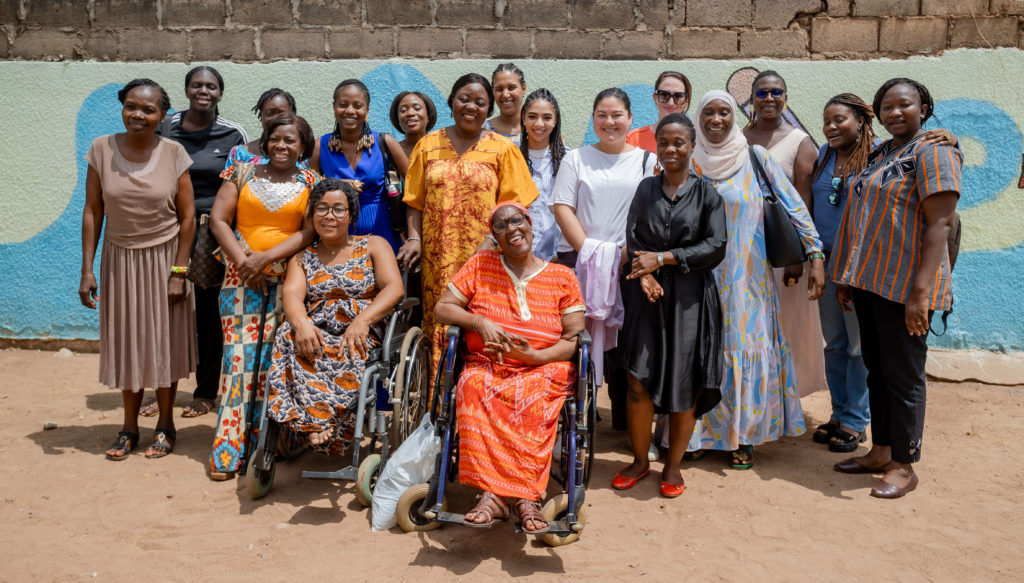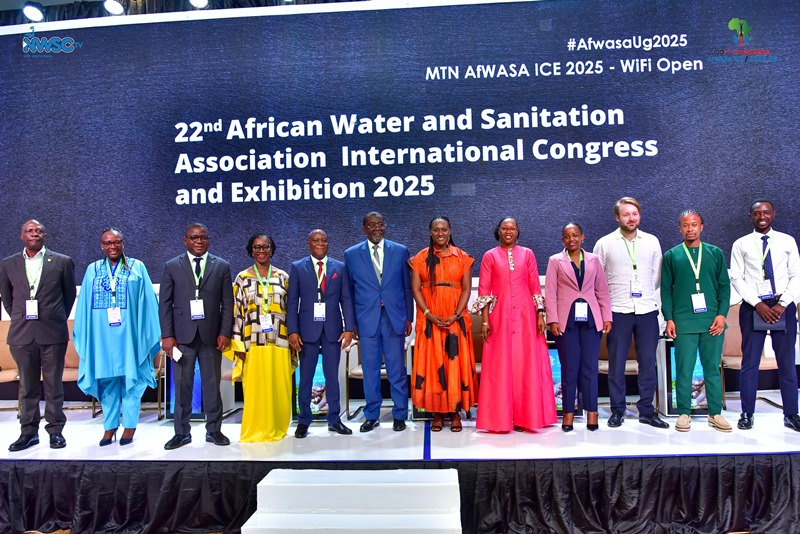Eliminating trachoma in Ghana – pioneering work 1996-2002

Nick Burn, CBM Programme Manager for Neglected Tropical Diseases (NTDs), explores the pioneering role of CBM and our partner Presbyterian Church of Ghana in tackling trachoma in the country from 1996-2002.
The WHO recently announced the elimination of trachoma as a public health problem in Ghana – a significant milestone for Africa. Although other countries have declared elimination, Ghana is the first country in Sub-Saharan Africa to achieve this.
From 1996 to 2002, CBM and its partner, the Presbyterian Church of Ghana (PCG), played a vital role as they were the first to implement a specific programme to address the causes of blindness due to trachoma in the Northern and Upper West Provinces, where it was endemic. Over this period, CBM and PCG also trained dozens of government ophthalmic nurses to perform many hundreds of sight-saving trachoma surgeries.
Eye Health Services in Ghana
CBM has supported Eye Health work in Ghana for over 40 years. Its Eye Health partner, the Presbyterian Church of Ghana (PCG), manages eye hospitals in Bawku (North East) and Agogo (mid central Ghana). CBM’s support to PCG covered all aspects of eye health including cataract surgery, glaucoma, low vision and refractive error.
From 1990, over a period of more than 15 years, CBM supported training programmes for eye doctors and ophthalmic nurses through the National Training programme in Accra. Many doctors from English speaking countries in West Africa completed a diploma course and dozens of ophthalmic nurses were trained in Bawku or Agogo, and underwent a 3 month classroom course followed by 9 months of practical training.
PCGs Eye Hospital in Bawku, Upper East Region, provided eye health services right across northern Ghana. With the remoteness of this vast area, CBM funded Eye Health outreach teams which travelled widely and even into Burkina Faso – which borders Ghana to the north. These were regions with very few health services and the PCG outreach teams often provided the only eye care services available to communities as very few government staff were trained in eye health. The teams treated eye infections and referred cases of cataract and other diseases to the Eye Hospital.
Trachoma
It wasn’t until the mid-1990s that CBM and PCG became aware of the scale of active trachoma in the Northern and Upper West Provinces. In 1995 a visiting ophthalmologist was studying data from these regions and became aware of the significant number of cases of trachoma many of whom had damage to the cornea due to rubbing of eye-lashes.
Isaac Baba (former Regional Eye Coordinator at PCG) explained:
‘Up until then, no one thought it was a big problem, until we realised it was the cause of a lot of cases of blindness’.
Dr Allen Foster, then the Medical Director at CBM, agreed to support a rapid assessment in the area of Daboya where the largest concentration of cases had been recorded.
Once the need had been established, proposals were written to provide funding for outreach teams and also for training; it was first necessary to train ophthalmic nurses to support the outreach teams in providing the sight saving surgery. As a first step, experienced ophthalmic nurses and eye doctors were trained at the PCG hospital in Bawku. They would become trainers who could then train others in surgical techniques for trachoma. CBM, and others, then funded the training for government nurses who would support the outreach teams on the ground. Over a period of 3-4 weeks they learnt the entropion surgical technique and were supervised as they carried out their first surgeries.
Outreach Programme
To tackle the large number of trachoma cases in northern Ghana, CBM provided funding for four trachoma outreach teams, which travelled into the Northern and Upper West regions and carried out hundreds of surgeries.
Peter Abugri, one of the PCG ophthalmic nurses in the outreach team (pictured right on a motorbike with another nurse) remembers: ‘Over the next seven years, CBM really gave a lot of support to this programme including a vehicle, motorcycles, the drugs, allowances, instruments, literature… everything we needed.’
With the support of community volunteers, the non-surgical staff would identify potential cases who would then be checked by the surgeons. Those with early stages of trachoma were given antibiotics and those with trichiasis would be operated on. Often operations were done in someone’s house or an empty school classroom. Isaac Baba explained,
‘Due to their superstitions people were afraid – if you asked them to come to a clinic they would never come; if you took them there they would run away, so we had to operate where people were’.
One of the benefits of the programme was also to screen for other eye conditions such as cataract, which could be referred to other centres for treatment.
The outreach teams also visited local schools to screen children for early stages of trachoma. When these were found, the children would be given antibiotics and all the children were taught the importance of face washing.
Pioneering trachoma research
In 1999, CBM contributed to the support of Dr Anthony Solomon at LSHTM (London School of Hygiene and Tropical Medicine) to carry out research on mass drug treatment with the antibiotic azithromycin, with the support of the PCG. Azithromycin had recently been shown to be effective in treating trachoma but its manufacturer, Pfizer, was concerned about the safety of its use in a mass campaign – without the oversight of doctors to give the correct dose.
This research confirmed that azithromycin could be safely distributed by trained community workers, in the same way that CBM had been distributing Mectizan for river blindness for many years, providing the basis for all future mass drug administration of azithromycin, not just in Ghana, but throughout the world.
The research was overseen by Professors David Mabey and Allen Foster, and made possible with the field support of Dr Maria Hagan, National Eye Care Programme, Ghana Health Service, and PCG staff Peter Abugri and Joe Akudibillah, Bawku Rural Eye Programme.
National Trachoma Programme
In the 1990s, the PCG with the support of CBM, was the only organisation working with the government on trachoma. In 1998, PCG seconded Joseph Akudibillah, its head ophthalmic nurse, to the government of Ghana as National Coordinator for the Evaluation of Trachoma. In 2000 when the National Trachoma Control Programme was set up, he became its first Coordinator. The presence of the Trachoma Control Programme greatly enhanced cooperation between the PCG outreaches and the local government clinics as government staff could be easily mobilised to assist with the programme.
The CBM/PCG trachoma outreach programme ended in around 2002. The government’s own health centres and hospitals had staff trained to carry out TT surgery and the National Trachoma Control Programme was actively carrying out mass drug distribution for the prevention of trachoma, under the SAFE strategy. Much important work had been done in the early years over this vast area. However, but it would be many more years, with vital support from other partners, before the threshold for surgical cases was achieved and the stringent requirements for elimination had been finally met.
Thanks to our generous supporters, CBM’s work to prevent and treat trachoma continues. We are currently working with partners and in 8 countries – Burundi, Nigeria, Kenya, Ethiopia, Pakistan, Chad, Yemen, and the Democratic Republic of Congo (DRC) – to help eliminate this pain
ful, blinding disease. Donate today to help build a world free of trachoma.
This blog was amended on 1.7.18 to acknowledge the role of key Ghana Health Service and PCG staff in the 1999 research project.
Image and blog: https://www.cbmuk.org.uk/blog/eliminating-trachoma-ghana-pioneering-work-1996-2002/


